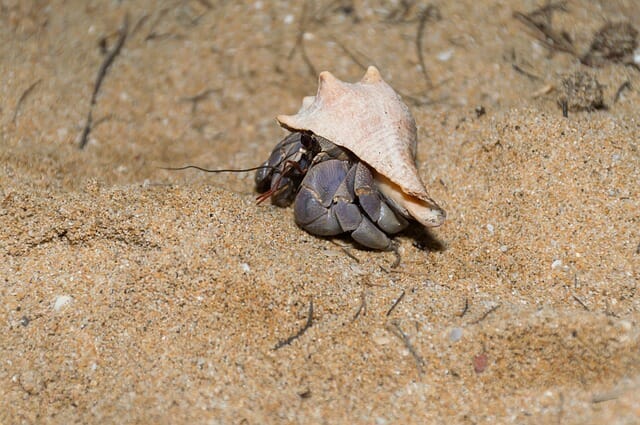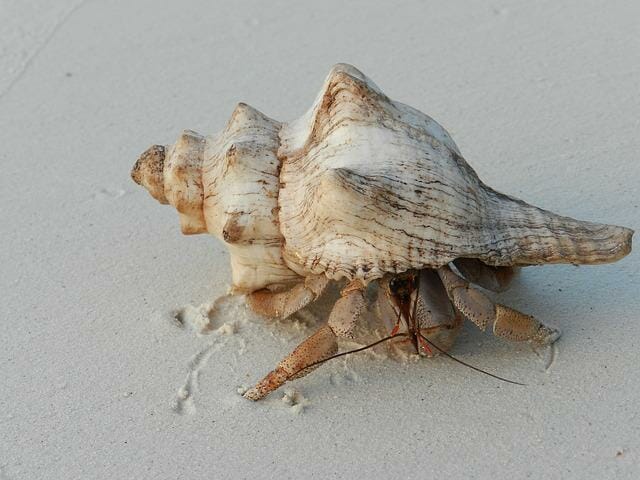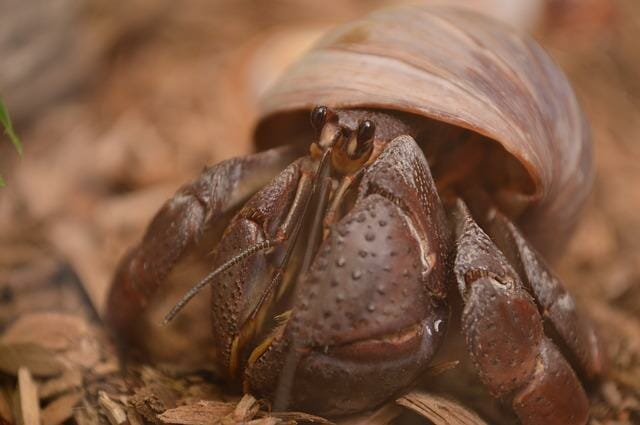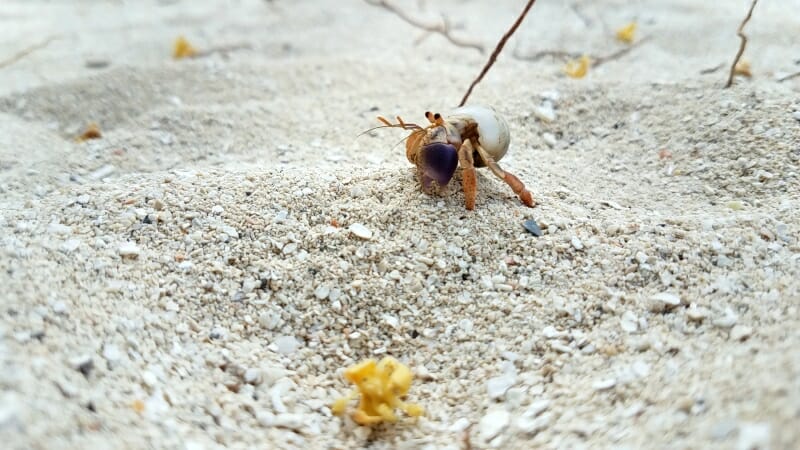Are Hermit Crabs Social: Hermit Crabs and Their Social Behaviors

Hermit crabs are social creatures by nature. They enjoy the company and will form colonies as a result. When kept in an enclosure with others of their kind, colonies can be large and protect the crabs from predators.
Hermit crabs are intelligent and territorial creatures, so providing them with a colony of compatriots is essential for their well-being. Make sure to provide your hermit crab with a suitable enclosure with plenty of room to roam and socialize.
Table of Contents
Do Hermit Crabs Like Interacting With Humans?
Generally speaking, if they like being around humans, they will do fine in an aquarium setting – make sure they have enough room! For those of you who want to keep a hermit crab but don’t have room for one or two, small tanks can work well for one or two crabs, but larger tanks require three or more to feel comfortable.
However, some hermit crabs are more solitary and can live happily without interacting with humans. So if you’re considering getting a crab for your aquarium, be sure to know the personality of the crab you’re buying.
Keeping Hermit Crabs With Other Species
Ensure the new crab is introduced gradually and under appropriate conditions, so there are no clashes or fights. Ultimately, it’s up to you to decide if hermit crabs can live together in your home. But don’t hesitate to ask a hermit crab expert for help!
Can Hermit Crabs Live Together?
Yes. Hermit crabs are social creatures and must be kept in pairs or groups. Proper care will keep your hermits happy and healthy, but if your home doesn’t have enough space for a group, you can purchase smaller colonies online or from a pet store.
Keep group size at 30 hermit crabs or less to avoid potential problems. Hermit crabs are social creatures and must be kept in close quarters to socialize and interact. When kept in groups of six or more, hermits will be able to survive in a variety of aquariums and homes.
Things to Know When Hermit Crabs Build a Colony
Hermit crabs need a few key things to live together in colonies. Some of these are:
- A hermit crab colony needs a place to hide from predators and a humid environment. You can achieve this by keeping them in an area with high moisture levels.
- As mentioned before, colonies needed some common interests to form social groups. These usually revolve around things like eating or nesting behavior.

Keeping a Hermit Crab in an Aquarium With Other Marine Animals
Hermit crabs can be kept in an aquarium with other marine species. If you decide to keep them together, ensure they are of the same size and temperament. You can also buy a special tank to accommodate both of their needs.
Can Hermit Crabs Live With Other Animals?
Yes, most hermit crabs enjoy living in close quarters with other animals. However, not all crabs can adapt to this lifestyle. If you’re considering adding a hermit crab to your home, it’s best to do some research first. This includes checking whether the crab is compatible with your home and space and ensuring enough food and water are available.
Once the crab is adjusted to its new surroundings, you’ll probably start seeing them interacting more closely with you. Make sure to provide them with ample enough space, with plenty of food and water – hermit crabs can be pretty active!
If you notice any aggression or discomfort from the others, it’s best to separate them and find a new home for your crab. Hermit crabs are social creatures and should be kept with other hermit crabs of similar sizes.
Understanding the Social Behaviors of Hermit Crabs
By understanding the social behavior of your hermit crab colony, you can foster a healthy community that will be beneficial to both you and your hermit crabs. Some common social behaviors include eating, drinking, and exploring their environment.
By observing these behaviors and understanding what motivates them, you can better care for and understand your hermit crabs.
Molting Behavior
Hermit crabs are known for their social behaviors – they love to be around other hermit crabs and engage in “dancing” during molting. This helps them release energy and avoid predators. During molting, hermit crabs need to be around other hermit crabs to molt properly. The more social hermits are, the faster they will complete their process! A study has shown that colonies of socially-active hermits can survive up to three times as long as those that aren’t so active!

Grooming Behavior
Hermit crabs are well-known for their unique grooming behavior. They use this activity to clean themselves, remove parasites, and remove unwanted hair. You can do this in a few ways:
- Grabbing the other crab’s body with their claws and pulling it close
- Rubbing their shells against each other
- Even spitting water at them
Grooming usually happens before mating, fights, or when the crab feels insecure.
Climbing Behavior
Hermit crabs use unique climbing behavior to interact with each other. This behavior is usually used during the night when food or mates are available, but you can also use it for communication. They rely on climbing behavior to find and socialize with others in their colony.
Feeding Behavior
Hermit crabs are omnivorous animals that feed mainly on small invertebrates. They will scavenge food found near the water’s edge and in other low-lying areas, as well as from arthropods that they catch with their claws. When feeding, hermit crabs will usually aggregate together to form a feeding pile. In addition, juveniles tend to feed more actively than adults and may compete for food sources.
Aggressive Behavior
Hermit crabs are known for their aggressive behavior. This includes territoriality, where the hermit crabs protect their territory by attacking others. However, this aggression is usually only seen during courtship rituals or when the crab is defending its eggs or young. Hermit crabs are pretty gentle and social creatures that enjoy interacting with others.
Chirping Behavior
Chirping is an interesting behavior that hermit crabs use to communicate with other hermit crabs in their colony. You can use it to establish dominance and hierarchy within the colony and attract mates or food. You don’t want to miss this fascinating behavior when observing hermit crab colonies!

Do Hermit Crabs Get Lonely?
It’s no secret that hermit crabs can get lonely – especially if they’re new to the home. That’s why it’s essential to allow enough time to adjust before adding them permanently. So don’t forget that setup time is critical when introducing new creatures into an aquarium or home – allow at least two weeks to get used to their new surroundings.
So, in addition to socializing with other hermit crabs, be sure to introduce them to all of the other inhabitants of your tank before adding them permanently.
Why Do Some Hermit Crabs Prefer to Be Alone?
Hermit crabs may live alone, but that doesn’t mean they’re antisocial. Some hermit crabs prefer to be alone, but some will mix with others when they are scared or during mating season. Regarding socializing, hermit crabs in colonies usually stay together for their entire life, whereas those who live alone may leave the colony after a certain age.